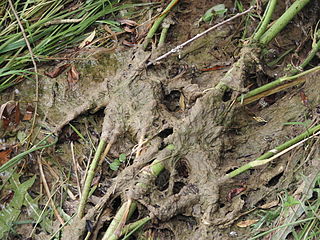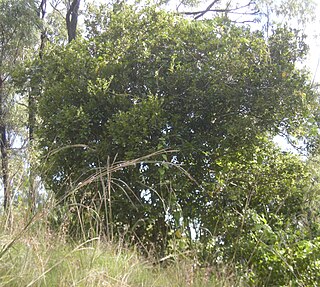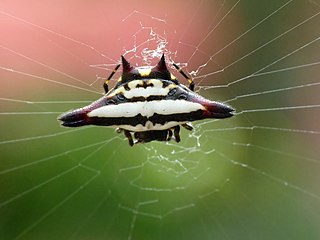Related Research Articles

Fred Gannon Rocky Bayou State Park is a Florida State Park located on the northwestern coast of the U.S. state of Florida, southeast of Niceville. The address is 4281 Highway 20. Native American middens and artifacts can be seen throughout the park.

Didymosphenia geminata, commonly known as didymo or rock snot, is a species of diatom that produces nuisance growths in freshwater rivers and streams with consistently cold water temperatures and low nutrient levels. It is native to the northern hemisphere, and considered an invasive species in Australia, Argentina, New Zealand, and Chile. Even within its native range, it has taken on invasive characteristics since the 1980s. It is not considered a significant human health risk, but it can affect stream habitats and sources of food for fish and make recreational activities unpleasant. This microscopic alga can be spread in a single drop of water.

Solenopsis geminata or tropical fire ant is a species of fire ants, described by Fabricius in 1804, in the tribe Solenopsidini; it was originally placed in the Atta genus. This species has a pan-tropical distribution.

Protoginella is a genus of sea snails, marine gastropod molluscs in the subfamily Austroginellinae of the family Marginellidae, the margin snails.
Ceromitia geminata is a species of moth of the family Adelidae. It is known from South Africa.

Diospyros geminata is a small tree or shrub of dry rainforest, gallery forest and sub tropical rainforest of Australia and New Guinea.

Quercus geminata, commonly called sand live oak, is an evergreen oak tree native to the coastal regions of the subtropical southeastern United States, along the Atlantic Coast from southern Florida northward to southeastern Virginia and along the Gulf Coast westward to southern Mississippi, on seacoast dunes and on white sands in evergreen oak scrubs.
Mattesia is a genus of parasitic alveolates of the phylum Apicomplexa. Species in this genus infect insects.
Asura geminata is a moth of the subfamily Arctiinae. It is found in New Pomerania ;.
Nola geminata is a moth in the family Nolidae. It was described by Paul Mabille in 1899. It is found on Madagascar.

Colobotheini is a tribe of longhorn beetles of the subfamily Lamiinae.
Angadenia is a genus of plants in the family Apocynaceae first described as a genus in 1878. It is native to Florida and the West Indies.
- Angadenia berteroi(A.DC.) Miers - Florida, Bahamas, Cuba, Hispaniola, Turks & Caicos Islands
- Angadenia lindeniana(Müll.Arg.) Miers - Cuba, Hispaniola, Jamaica

Colobothea is a genus of longhorn beetles of the subfamily Lamiinae.

Bradinopyga geminata is a species of dragonfly in the family Libellulidae known commonly as the granite ghost. It is native to India, Sri Lanka and Thailand, where it is a common and widespread species.
Colobothea andina is a species of beetle in the family Cerambycidae. It was described by Monné in 1993. It is known from Peru.
Colobothea subcincta is a species of beetle in the family Cerambycidae. It was described by Laporte in 1840. It is known from Brazil.

Gasteracantha geminata is a species of spider of the genus Gasteracantha, found in India and Sri Lanka. It is known as the oriental spiny orb-weaver.

Notoaeschna geminata is a species of dragonfly in the family Telephlebiidae, known as the northern riffle darner. It is endemic to eastern Australia, occurring north of the Hunter River, New South Wales, where it inhabits rapid streams.
Anisotoma geminata is a species of round fungus beetle in the family Leiodidae. It is found in North America.

Odorrana geminata is a frog in the genus Odorrana. It is found in Vietnam.
References
- ↑ BioLib.cz - Colobothea geminata. Retrieved on 8 September 2014.